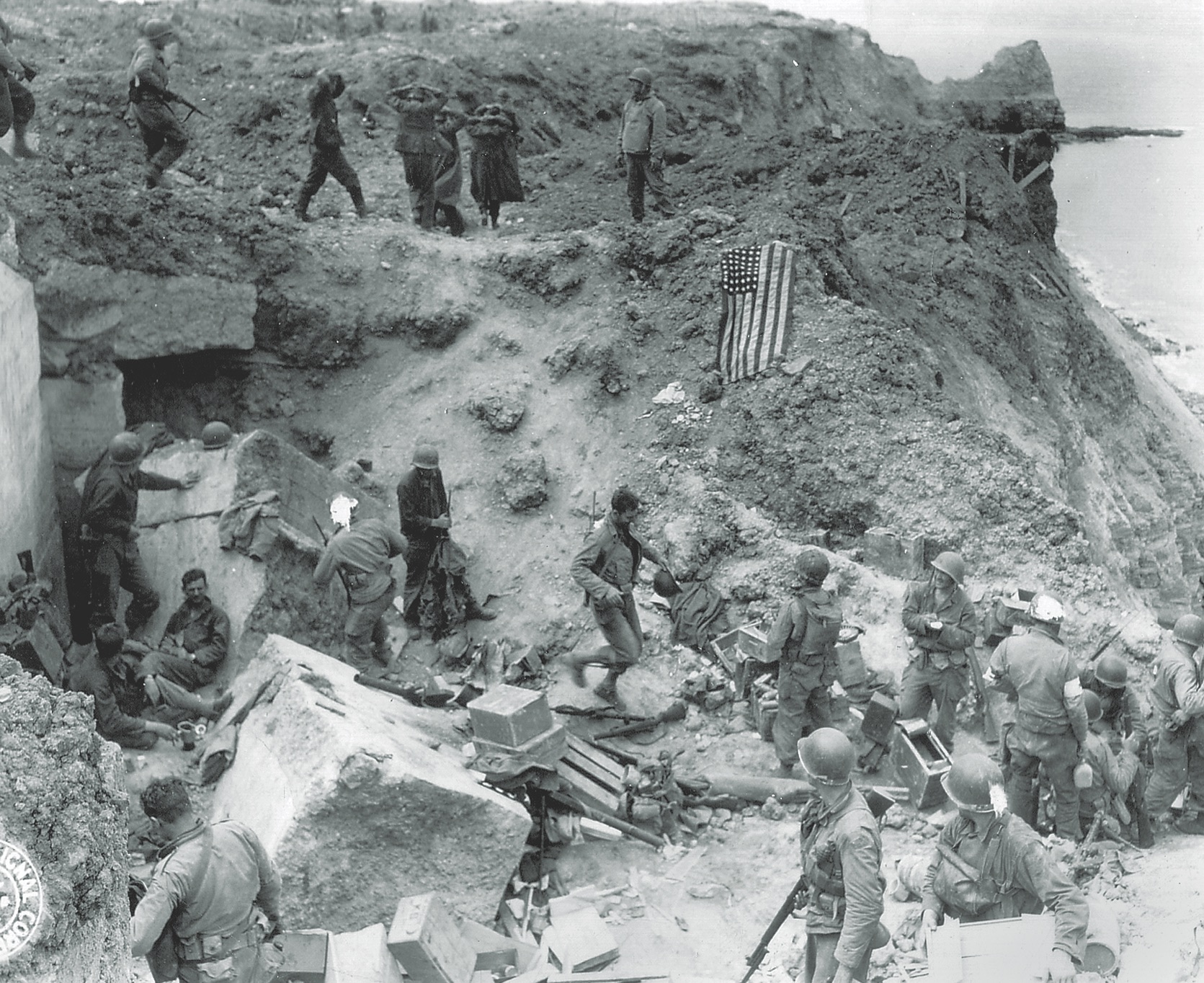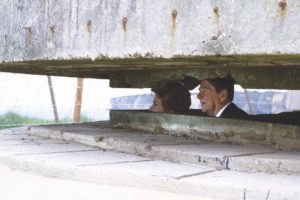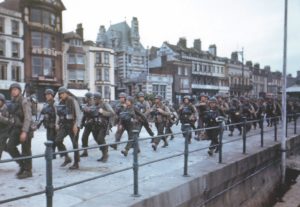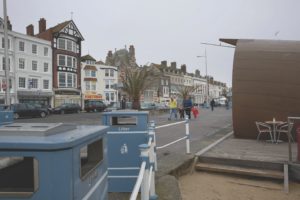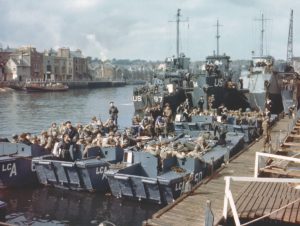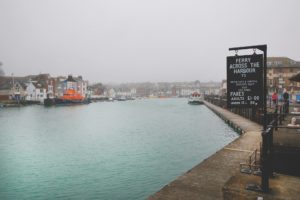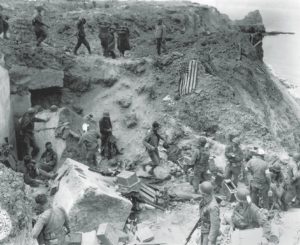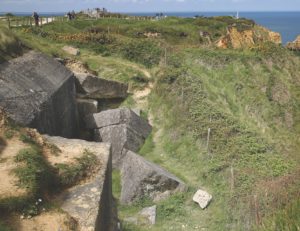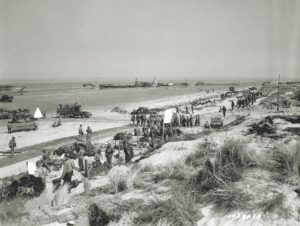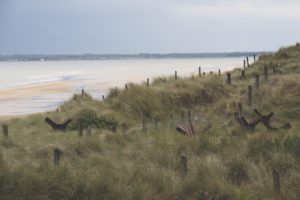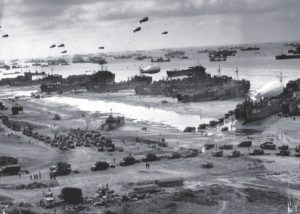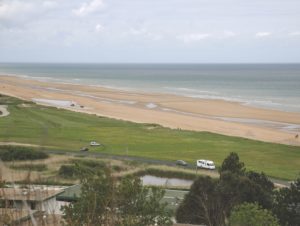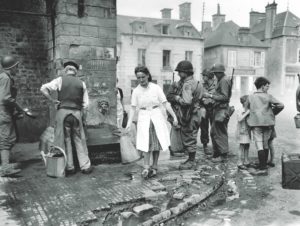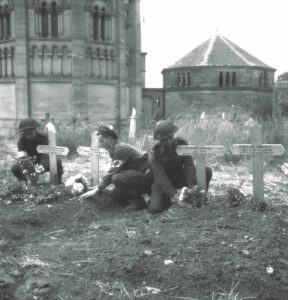By early June 1944 the Allies were poised for offensives on all fronts in World War II. As the British prepared to retake Burma from the Japanese, the Americans steamed toward the Marianas, Soviet forces positioned themselves for a massive offensive into Belorussia and another into Finland, and Allied armies were about to retake Rome.
In Britain, of course, naval, air and ground forces stood ready to open the long-anticipated “second front” in France with an amphibious invasion of Normandy. Meteorologists forecast a brief window of clear weather on June 6. Supreme Allied Commander Gen. Dwight D. Eisenhower seized the moment to order airdrops of paratroopers and gliders behind enemy lines, the 2nd Ranger Battalion’s risky climb to seize German gun positions on Pointe du Hoc and the landings on the code-named beaches of Sword, Juno, Gold, Omaha and Utah that, despite bloody setbacks, ultimately secured a vital beachhead in Normandy. Six weeks of tough fighting lay ahead: British and German armor clashed around Caen, while American units ground their way through the hedgerows to Saint-Lô. Once freed of the confines of the Cotentin Peninsula, the Allies set their sights first on Paris and then on Berlin—but there was still a long way to go.

